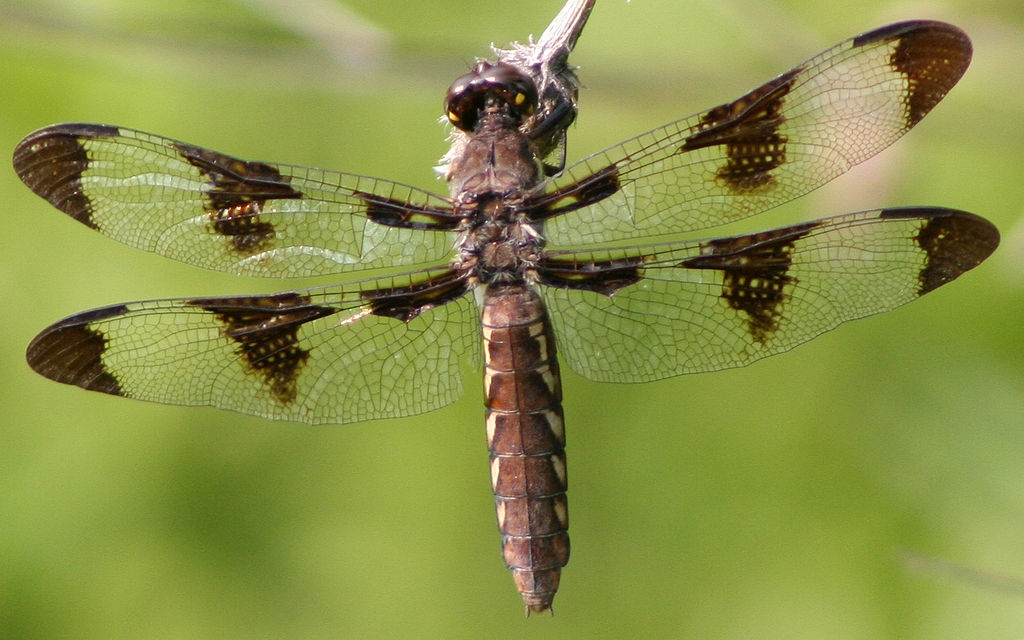The British TV show “Black Mirror” had an episode wherein a tech company was utilizing miniature drones that mimicked insects to kill people. Real-life scientists are now working on the first part by genetically engineering dragonflies in order to turn them into tiny flying machines. Whether or not the targeted assassination part will follow is yet to be determined.
Draper is a company involved in creating biomedical solutions and it recently announced that it was going to create a drone that was part machine and part living dragonfly. The project is titled DragonflEye and before anyone raises a fuss about scientists creating a monstrosity, it’s not actually about creating a bastard version of a machine dragonfly from scratch.
Instead, the project will involve strapping a tiny electronic backpack on the dragonfly, which will basically tell it what to do by sending signals to its nerve cord. It’s basically like prodding the flying insect to follow instructions instead of robbing it of autonomy completely.
Jesse J. Wheeler is the lead of the project and according to him, the prototype has already been developed, but it still requires testing. The testing will involve putting the backpack on dragonflies and having them whiz around a controlled space surrounded by cameras to see just how viable the concept is Futurism reports.
Speaking to IEEE Spectrum, Wheeler noted how past experiments in controlling insects used heavier subjects such as beetles. However, the biggest difference between previous attempts and their own method is the use of the navigation system.
More than anything else, it’s the matter of guidance rather than control that might just allow the project to take off. By applying optogenetics, which is basically genetically modifying the response of organisms to light, it removes a lot of the restrictions that have been literally weighing down previous experiments. It basically makes the burden lighter on the insect while still achieving the desired results.



 If life exists on Jupiter’s moon Europa, scientists might soon be able to detect it
If life exists on Jupiter’s moon Europa, scientists might soon be able to detect it  Why is the universe ripping itself apart? A new study of exploding stars shows dark energy may be more complicated than we thought
Why is the universe ripping itself apart? A new study of exploding stars shows dark energy may be more complicated than we thought  Alpha, beta, theta: what are brain states and brain waves? And can we control them?
Alpha, beta, theta: what are brain states and brain waves? And can we control them?  Customizing mRNA is easy, and that's what makes it the next frontier for personalized medicine − a molecular biologist explains
Customizing mRNA is easy, and that's what makes it the next frontier for personalized medicine − a molecular biologist explains  Why now is the time to address humanity’s impact on the moon
Why now is the time to address humanity’s impact on the moon  The mystery of consciousness shows there may be a limit to what science alone can achieve
The mystery of consciousness shows there may be a limit to what science alone can achieve  The brightest object in the universe is a black hole that eats a star a day
The brightest object in the universe is a black hole that eats a star a day  Synthetic human embryos let researchers study early development while sidestepping ethical and logistical hurdles
Synthetic human embryos let researchers study early development while sidestepping ethical and logistical hurdles  Larger and more frequent solar storms will make for potential disruptions and spectacular auroras on Earth
Larger and more frequent solar storms will make for potential disruptions and spectacular auroras on Earth  The rising flood of space junk is a risk to us on Earth – and governments are on the hook
The rising flood of space junk is a risk to us on Earth – and governments are on the hook  Tatahouine: 'Star Wars meteorite' sheds light on the early Solar System
Tatahouine: 'Star Wars meteorite' sheds light on the early Solar System  Black hole, neutron star or something new? We discovered an object that defies explanation
Black hole, neutron star or something new? We discovered an object that defies explanation  Orbital resonance − the striking gravitational dance done by planets with aligning orbits
Orbital resonance − the striking gravitational dance done by planets with aligning orbits  A Nasa rover has reached a promising place to search for fossilised life on Mars
A Nasa rover has reached a promising place to search for fossilised life on Mars  The brain is the most complicated object in the universe. This is the story of scientists’ quest to decode it – and read people’s minds
The brain is the most complicated object in the universe. This is the story of scientists’ quest to decode it – and read people’s minds 































